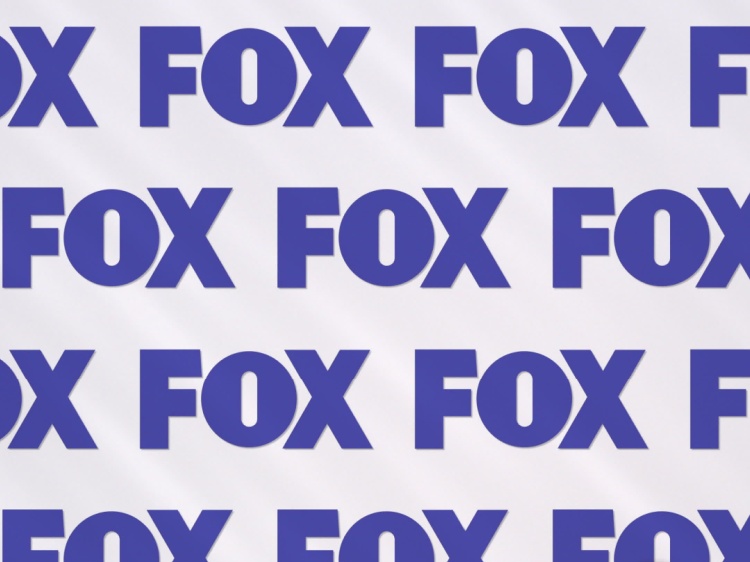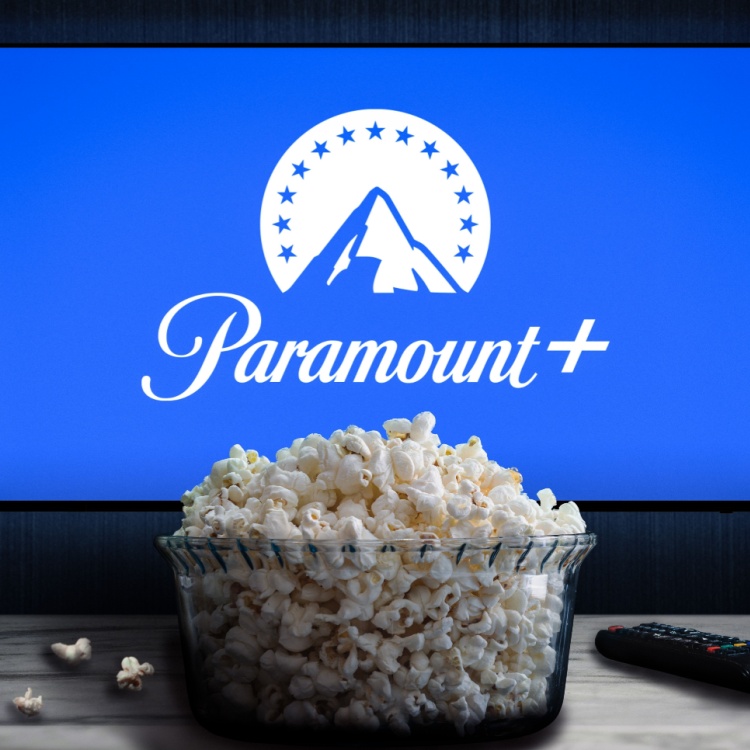
Why Mad Men Marketing Is Your Go-To Partner for Advertising on Fox One
Fox One Is Coming: Are You Ready for the Next Big Thing in Streaming TV?
This Fall, Fox One is set to become the newest heavyweight in the streaming television landscape—bringing premium content, a built-in audience from the Fox brand, and a fresh advertising opportunity for brands ready to take advantage of it.
At Mad Men Marketing, we’ve been ahead of the curve in streaming TV advertising for years. As Fox One rolls out in Fall 2025, we’re already helping businesses like yours craft effective, data-driven campaigns to dominate this new platform from day one.
Why Fox One Matters for Your Brand
Fox One isn’t just another streaming service. It’s backed by the trusted Fox network, known for hit shows, live sports, and a loyal viewer base. That means:
-
High viewer engagement
-
Target-rich environments for ads
-
Premium content inventory
-
Cross-platform reach (TV, mobile, desktop, and CTV apps)
With CTV (connected TV) ad spend expected to surpass $40 billion by the end of 2025, Fox One is arriving at exactly the right time for brands looking to scale.
Mad Men Marketing: Streaming TV Is in Our DNA
We don’t just “do streaming.” We live and breathe OTT/CTV advertising. When you work with Mad Men Marketing, you’re partnering with a team that:
-
Has hands-on experience with top-tier streaming platforms
-
Builds custom audience targeting strategies using first- and third-party data
-
Designs high-impact creative that fits the platform and the moment
-
Delivers full-funnel attribution so you know what’s working—and what’s not
And now, with Fox One entering the market, we’re unlocking new inventory and new possibilities for our clients across every vertical.
What Sets Us Apart?
✅ Early Access & Beta Opportunities
We stay ahead of the pack by cultivating direct relationships with streaming platforms—giving our clients first-mover advantages like early ad placement access and exclusive beta inventory on emerging platforms like Fox One.
✅ Hyperlocal & National Reach
Whether you’re a local business or a national brand, we fine-tune campaigns to reach your exact audience with granular geographic targeting and real-time campaign optimization.
✅ Transparent Results
Our proprietary dashboard gives you real-time reporting across devices, letting you measure true ROI—not just impressions.
Ready to Dominate Fox One? Let’s Talk.
The launch of Fox One marks a massive opportunity—but only for brands that move early and partner smart. At Mad Men Marketing, we’re already helping clients plan, buy, and optimize streaming campaigns for this exciting platform.
If you’re looking for a proven streaming TV advertising agency that understands how to make your brand shine on Fox One, you’re in the right place.

Paramount+ vs Broadcast
The Advantages of Advertising on Paramount + vs. Broadcast TV
In today’s evolving advertising landscape, choosing the right platform can significantly impact your brand’s success. With traditional broadcast television competing against newer streaming platforms like Paramount Plus, it’s essential to understand which medium offers greater advantages for your marketing goals.
At Mad Men Marketing, we frequently advise clients about effective advertising strategies tailored to modern audiences. In this article, we outline key benefits of advertising on Paramount Plus compared to traditional broadcast television.
Targeted Audience Reach
Paramount Plus:
Advertising on Paramount Plus offers powerful targeting options, allowing brands to reach specific demographics based on interests, viewing habits, and content preferences. This tailored approach ensures your message resonates directly with your ideal audience, enhancing ad effectiveness and ROI. You can also view analytics about your ads in real-time. Paramount Plus even has a pixel you can add to your website to track a desired action.
Broadcast Television:
Traditional broadcast television typically provides a broad, less targeted audience. While beneficial for mass-market awareness, it doesn’t offer precise demographic targeting, potentially leading to less efficient use of advertising budgets. This is especially notable when you have a business with a single location in a specific area of town that wouldn’t benefit from the reach of a large geographic DMA.
Higher Viewer Engagement
Paramount Plus:
Viewers on Paramount Plus are actively selecting their content, making them more engaged with what they watch—and consequently, with the advertisements they see. Ads within streaming services are often shorter and less intrusive, making viewers less likely to tune them out.
Broadcast Television:
Broadcast TV ads often interrupt programming, leading to lower viewer engagement. Audiences typically utilize commercial breaks for other activities, decreasing ad recall and overall effectiveness.
Precise Analytics and Measurement
Paramount Plus:
Advertising on streaming platforms like Paramount Plus provides detailed analytics such as viewer impressions, demographic insights, ad completion rates, and engagement metrics. This rich data helps brands optimize their campaigns in real-time, improving performance continuously.
Broadcast Television:
Traditional TV ads rely on broader, less granular ratings systems. While useful, these ratings offer limited immediate insight into campaign performance, viewer engagement, or detailed demographic data, making precise optimization more challenging.
Flexibility and Cost Efficiency
Paramount Plus:
Digital streaming platforms offer flexible advertising packages with customizable budgets, campaign lengths, and ad placements. Brands can start, pause, or adjust their campaigns quickly to respond to performance data or market conditions, ensuring maximum budget efficiency.
Broadcast Television:
Advertising on broadcast television typically requires larger budgets, longer lead times, and fixed schedules. There’s less room to make rapid adjustments, potentially leading to less efficient use of advertising spend.
Growing and Diverse Audiences
Paramount Plus:
Streaming services like Paramount Plus are rapidly growing their user base, capturing diverse audiences across all demographics. The rise of cord-cutting means more consumers are adopting streaming platforms, presenting advertisers with significant new growth opportunities.
Broadcast Television:
While still reaching broad audiences, broadcast television faces declining viewership among younger demographics who increasingly prefer digital and streaming platforms. Advertisers targeting younger or tech-savvy consumers may miss key opportunities by relying solely on broadcast television.
Less Ad Clutter, Greater Visibility
Paramount Plus:
Paramount Plus generally offers limited commercial breaks, meaning fewer ads competing for viewer attention. This reduced clutter ensures your advertisements stand out, leading to greater visibility and brand recall.
Broadcast Television:
Commercial breaks on broadcast TV can be lengthy and crowded, making it challenging for individual ads to capture viewer attention. Increased clutter decreases overall ad visibility and effectiveness.
Final Thoughts: Paramount Plus or Broadcast TV?
When considering advertising strategies, it’s clear that Paramount Plus offers significant advantages over traditional broadcast television, especially regarding targeted reach, viewer engagement, precise analytics, budget flexibility, and reduced ad clutter.
Mad Men Marketing can help your brand navigate this landscape effectively. Our expert media planners will develop tailored campaigns designed for maximum impact on platforms like Paramount Plus.
Ready to elevate your advertising strategy with Paramount Plus? Contact Mad Men Marketing today to get started.

BEST BIG GAME TV Commercial
Another year another mixed bag of Super Bowl commercials (not to mention a huge blowout of a game). Some really stood out to me while others left me wondering if the $8 million price tag for some of these spots worth it? Super Bowl is seen by the largest audience in the world but for some companies it’s still a risk to ride on one 30 second commercial. Here’s my thoughts on my favorite spot this year!
FOX Indy
The FOX Indy TV spot had to take the top spot for me. With the Harrison Ford Jeep commercial, Nike women’s commercial, Uber Eats and the Jordan Hate commercial all in consideration. This was an ad with everything: great funny script, engaging visuals that had a throwback but modern look and style and at the end of the day it engaged the audience (fans or not) to meet one of their drivers and see what their sport is all about.
Pato O’Ward
This guy is a superstar. That’s what I come away with after seeing this spot. I’m not a huge racing fan myself but this still engaged me enough and locked his name in my head for future events, commercials etc. This is a monumental part of branding: getting a logo, phrase, call to action (or in this case a name of a racer) “stuck” in someone’s head. Every line of this script and every visual builds him up and gives him life and personality. Making him the perfect face of the sport, now he just needs to win the big race!
MAD Thoughts
This commercial while hilarious and awesome to watch, also gave us details on the sport mixed in with exciting visuals, transitions and pace. This hooked the people partly paying attention while covering all the bases of a big game spot. This would appeal to a wide audience while also appealing to fans of the sport. They kept it light and funny, but exciting and fast, while still showing us the sport, fans and racers and hopefully (for that $8 million price tag) hooked some new fans.

Pickleball, Beer and Relevance: 2025 Michelob Ultra Super Bowl Ad
Beer is Served
Starting the ad with a hard serve the best-selling beer in America appears on screen to score an easy first point. The beer is being consumed by a pickleball duo. The viewers are engaged but to make it all better, two actors that never lost their buzz appear on screen.
What I mean by not losing their buzz is me simply saying they have stayed relevant for many years. Willem Dafoe & Catherine O’Hara challenge the pickleball partners in a match, winner takes the beers.
The dynamic pickleball duo has a love for the game but an even deeper love for Michelob Ultra. Defeating their opponents with ease in order to be rewarded with more beer.
This Feels Ultra Familiar
This ad succeeds mostly due to one reason. Relevance.
This allows our brains to latch on to the advertisement. In this case it’s three separate links that connect to make it happen. From the jump the beer catches our eye. Beer is the beverage of football fans. Then familiar faces enter the screen, actors in this case. To seal the deal, pickleball is introduced into the ad. Pickleball is the fastest growing sport in America.
Those 3 links have us fully engaged. Now the ad needs to finish the match and make a lasting impression. This is accomplished by scenes of Willem and Catherine comically but mostly in impressive fashion beating their opponents.
Winning Tastes Good
The marketing team at Michelob Ultra rallied to piece together a great ad. Relevance and winning go hand in hand in the advertising world.
Subtract one of the 3 key links to the ad and I feel like it wouldn’t feel as strong as it does now. We wouldn’t be fully engaged. We wouldn’t care as much to be on that winning team.
We would love to be a part of your dynamic duo here at Mad Men Marketing. We want to find your target audience and help you reach them better. Through data and analyzing we will make sure you stay relevant and winning!

Nike Aired Its First Super Bowl Ad in 27 Years — And It’s ALL Women.
Nike came in HOT for Super Bowl LIX, dropping a game-changing ad composed of all iconic women in sports and narrated by recent Grammy award-winning rapper, Doechii. I was only half paying attention to the game, but I was immediately locked in once this ad began. Nike has been around since 1971, and actually even a few years before that, formerly known as Blue Ribbon Sports, and at this point is considered a household name, so why debut a big game ad NOW after almost a 3 decade hiatus?
Stellar Line Up
Nike gave the stage to women on a day where only men play on the field. The ad showed a montage of female athletes, like WNBA powerhouses Caitlin Clark, A’ja Wilson and Sabrina Ionescu, Olympic gold medalist gymnast Jordan Chiles, track and field star Sha’Carri Richardson, footballer Alexia Putellas, and current world No. 1 tennis pro, Aryna Sabalenka. The 60 second masterpiece addresses the list of double-standards that women are constantly being told, but on screen, are proving critics wrong. Showing these women in their element, doing what they do best, and WINNING, was a great way to visually hit the emotional nerve of women everywhere that can relate. Imagine being told you shouldn’t be doing something, or worse, that you CAN’T do it — men don’t know what that feels like. This goes beyond sports.
Something to Prove
So after 27 years, why now? Nicole Hubbard Graham, the brand’s Chief Marketing Officer, says they wanted to tap into one of the few mass cultural experiences we have left. Nike isn’t a stranger to advertising during the Super Bowl, but in recent years, women are flipping the script and there is no better time than now to show their stories. “Women are just absolutely shattering records right now, selling out stadiums, ticket sales, commanding contracts like you’ve never seen before, and being placed with probably some of the harshest expectations of how you’re supposed to act. And I think they will redefine what it means to be athletes and personalities of the future.”, says Graham.
Basically, it’s two middle fingers. One to the critics of women, and the other to the critics of the brand and its relevance. According to Fast Company, this ad was actually the kick off to their new campaign that will continue into this year as the brand tries to reconnect with athletes the same way they did in the past, by using big, irreverent, disruptive, and emotional ideas. Their vision is athletes over algorithms.
So Win
The overarching theme for this ad is simple, its comeback season.
For Nike as it gains new competitors like Hoka and On Cloud, on top of their existing players like Adidas and Brooks, and as the brand battles declining stock (last summer saw its biggest drop since 2001).
For female athletes, who are securing record-breaking contracts and proving their worth on the world stage.
And for women all around the world being told they can’t.
Do it, and do it LOUD! Win on your terms.


